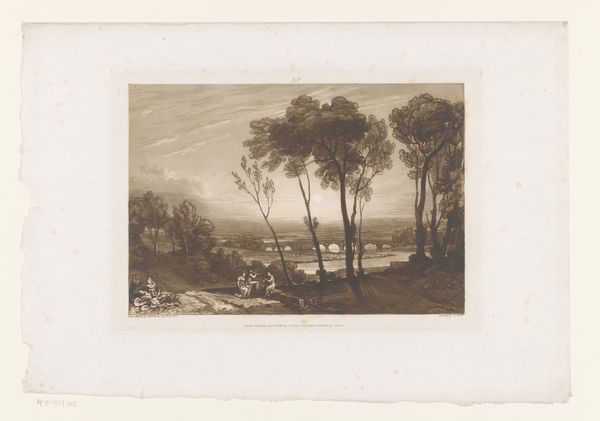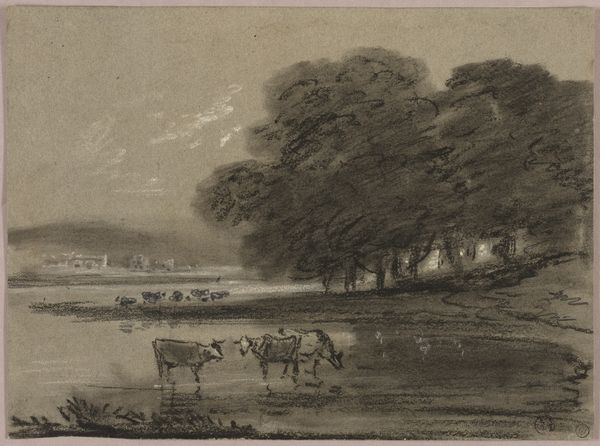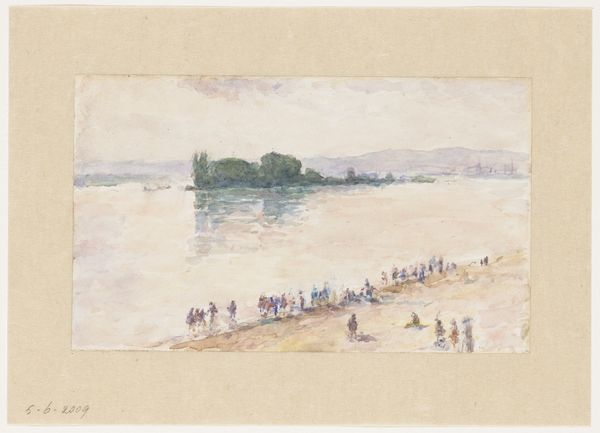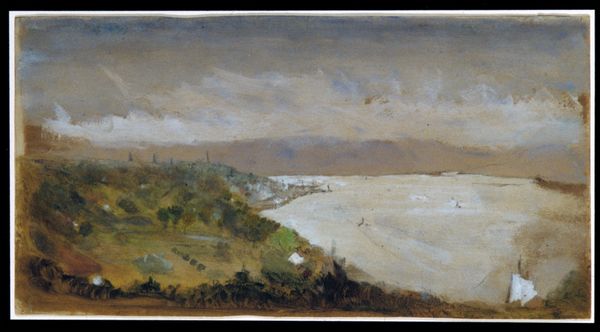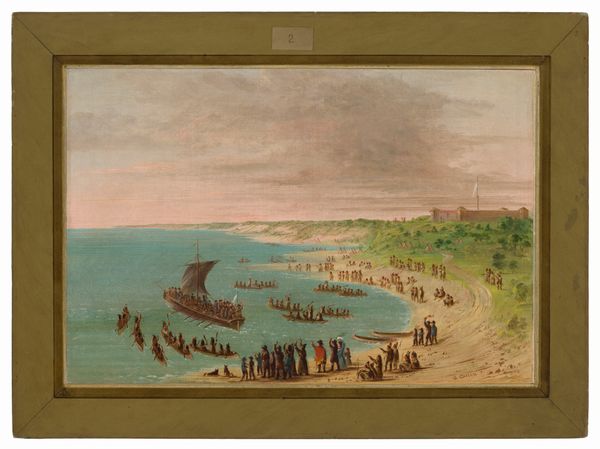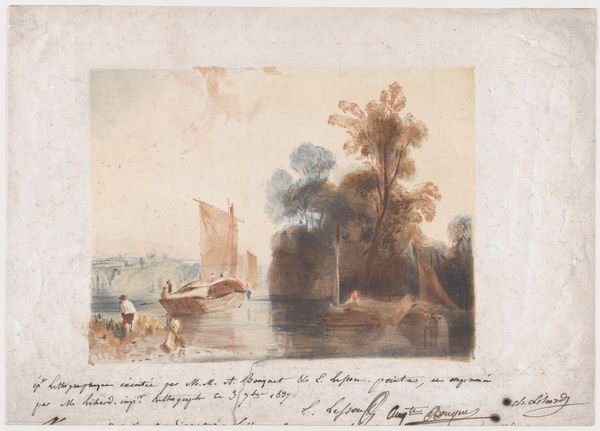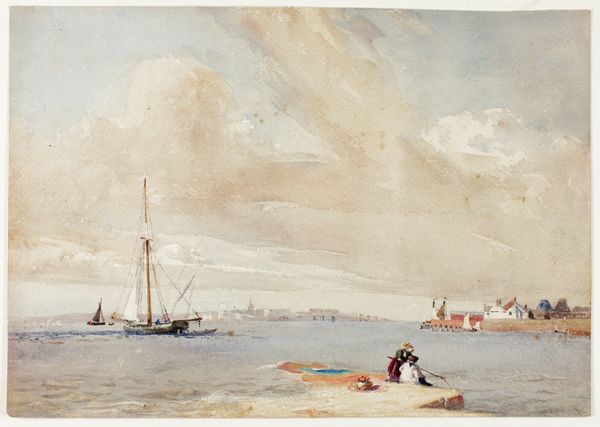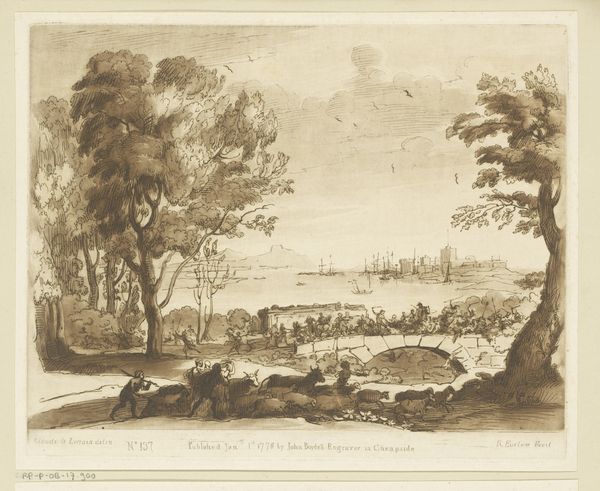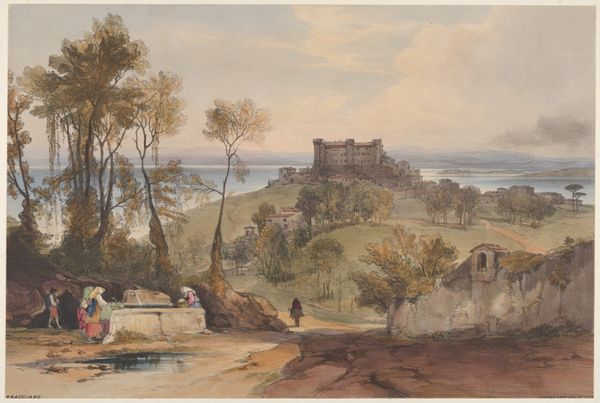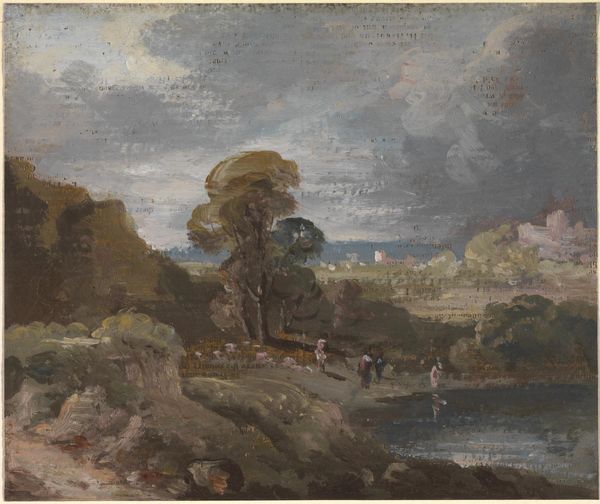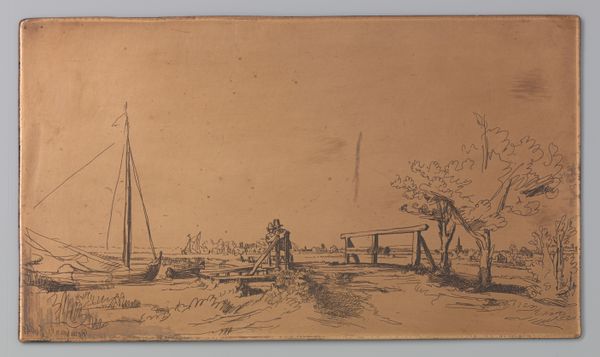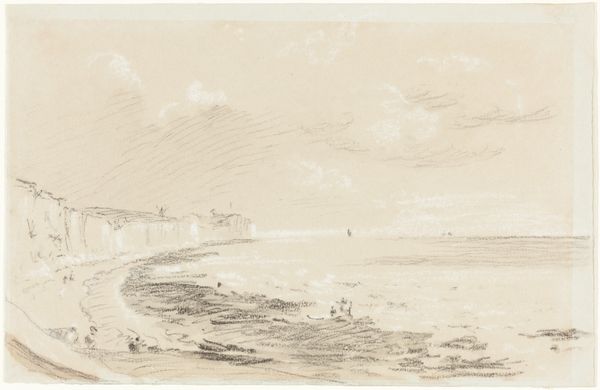
Dimensions: 6 1/8 x 9 1/4 in. (15.6 x 23.5 cm)
Copyright: Public Domain
Curator: This watercolor on paper, titled "Bathing Party," was created around 1870 by William P. Chappel. It offers a glimpse into leisure and social interactions of the time, now part of the Metropolitan Museum of Art's collection. Editor: It’s strangely captivating; that light seems almost ominous despite the festive subject. I’m immediately drawn to the way the artist balances the earthly browns and greens with that vast, ethereal expanse of sky and water. Curator: Indeed. The artist captured a moment that reflects broader social currents of the era. The juxtaposition of proper Victorian figures on the shore and the uninhibited bathers gives us an interesting tension between social constraint and emerging freedoms. It highlights the evolution of leisure activities during that era. Editor: I agree, but the contrast also draws my eye, formally. Note how Chappel uses color temperature to divide the composition into discrete areas. Warm hues anchor us on land. These slowly bleed into the cooler blues and greys, evoking distance and subtly conveying that sense of slightly dangerous, unconstrained pleasure. Curator: Right. It's key to understanding how the rising middle class reshaped concepts of leisure. Prior, the elite primarily enjoyed activities like these. As industrialization advanced and wealth spread, communal bathing became a pastime, mirroring new levels of disposable income and available free time. Editor: It’s also worth looking at the texture achieved with watercolor; that limpid sky looks like it breathes, due to the layers upon layers of thin washes. You feel like you're actually gazing out across an expanse of real weather. The overall lack of sharp lines really lends itself to an ethereal dreaminess. Curator: And Chappel seems very attuned to shifting class dynamics, especially gender roles. Observe the modest bathing costumes and demure glances exchanged. These emphasize the negotiated, carefully coded interactions that defined public sociability. This wasn't a radical reimagining; it's the established norms gradually adapting and being integrated. Editor: Ultimately, whether we examine it socially or aesthetically, there’s an ambiguity to the work. Despite the clear representation, Chappel suggests more than he states explicitly, creating an experience ripe for varied interpretations. Curator: It does serve as an invaluable document for understanding this transformative period. We're looking at both a painted scene and a tableau reflecting nuanced aspects of social history. Editor: Agreed. "Bathing Party" truly showcases the ability of visual language to express and encode a wide range of human behaviors and societal movements.
Comments
No comments
Be the first to comment and join the conversation on the ultimate creative platform.
